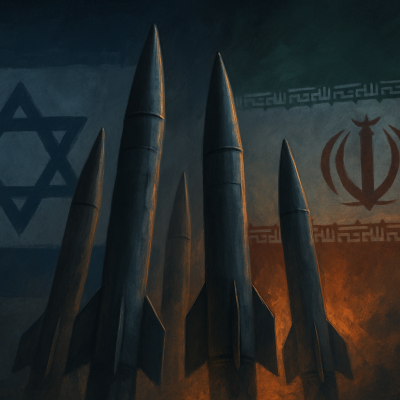It became a typical goal for the supporters of the “ideological” state to bring down the “national” state. They believe that the country is rotten dust, incompatible with religion and its rituals. They do not consider it an arena where humans have created civilisations throughout history. They see that humans were created to fight each other, not to be nations and tribes who know each other better, live under the prosperity of their homeland and reformed by their beliefs.
Religions were sent by God in his books to refine relations between man and his creator, between man and the people and between man and his life in an integrated society. Religion and its rituals add virtuous values for the person to create civilisations, rather than to cause conflict between cultures. Civilisation is a social system made by man to help him increase his cultural production. Civilisations develop and grow in light of their scientific, economic, political, moral, and artistic productions while reducing threats and unrest.
Military force is a government tool of legitimate violence used in case peaceful means fail to secure the country and its resources, people, territory, and prosperity of civilisation. It has never been a tool used by religions to eliminate people and civilisations.
Looking over thousands of years, we would find that Egyptian civilisation dates back to nearly 5000 BCE. The first Egyptian family ruled Egypt at about 3200 BCE, when King Menes joined Upper and Lower Egypt in a single centralised monarchy. During the first 1,500 years, Egypt was ruled by 14 Egyptian powerful families, intertwined with some weak periods. This country paved the way for world civilisations. It founded the ancient Pharaonic State and formed the first army to protect its land, people, and culture. It became an individual force with unique wealth and powerful institutions, army, and force of law. This civilisation turned Egypt into an enemy which must defend its sovereignty from the world. The world has learned from its civilization and imitated it. Then it was invaded about 3,500 years later.
In 1650 BCE, the Hyksos conquered Egypt and ruled it from the fifteenth family to the seventeenth family until Ahmose I succeeded in liberating the country, paving the way for some of the most powerful kings: Tuthmosis, Akhenaten, Ramses, and his descendants. During this period, Prophets Joseph and Moses, peace be upon them, came to Egypt from the eighteenth family to the twentieth family. The priests of Egypt formed the twenty-first family taking advantage of their religious sovereignty. Priests were trading in religion, so they have again weakened the state. Subsequently, Egypt has fallen under the occupation of the Assyrians and Persians until after the thirtieth family in the history of ancient Egypt.
Then Egypt was invaded by Greeks, Romans, and Byzantines. During this period, the Gregorian date started by the revelation of Jesus Christ, followed by Prophet Muhammad (peace be upon him). The Arabs entered Egypt as Muslims conquered the country, which was followed by the Ottoman occupation “in the name of religion” again, intervened by the French and then the British occupations.
Egypt was a world power for about 1,500 years, while it was occupied for 2,650 years. In the last five centuries Egypt was exhausted by the impact of wars, conspiracies, and corrupted and failed governments.
We can summarise the development of the Egyptian Armed Forces and their wars throughout history, where signs of the first government emerged in 4242 BCE and were formally established in 3200 BCE. The first central government in history set up its capital in Iunu, currently Ain Shams. It later split into two kingdoms because of religious and tribal conflicts. The first kingdom was stationed in the north Delta and the second in Upper Egypt. This lasted until they were reunited to become the first Pharaonic state in the hands of King Menes in 3100 BCE.
We begin with ancient history, where the army was organised into two sections: the first stationed in Memphis, currently Mir Rahina, while the second settled in Thebes, which is now Luxor. With the beginning of the Third Dynasty, driven by Bedouin raids on the eastern border, King Zoser planned to establish a stronger army. He divided the borders into rectangular sections (84×140). He then led an army that consisted of corps split up into teams. Zoser split teams into brigades of 200 soldiers, divided into four factions of 50 soldiers each. The leader of each faction was its flag bearer. The Armed Forces was called the Department of Weaponry. It had several sub-departments, including supply, armament, shipbuilding, and military correspondence. The ships fleet was headed by the architect of the ships who took the helm of the 50-metre long Great Ship.
The army evolved during the 11th and 12th dynasties, between 2040 BCE and 1786 BCE. Military service became mandatory and the army was divided into two sections: spearers—who marched in 10 rows of five soldiers wearing white shirts to mid-thigh and carrying shields and spears made of wood with iron heads—and archers—who were equipped with bows and arrows and carried knives for man to man combat.
The military mostly was tasked with invasions and accompanied convoys to Sinai, to bring in metals and stones, and to the Red Sea and Palestine for trade.
The Hyksos invaded Egypt and the battlefield was moved to Sinai. Semites, Asians, Libyans, and some of the people of the Mediterranean joined the Egyptian army led by Ahmose who used wheeled chariots—originally used by Hyksos—to defeat them in Sinai.
In Megiddo, Thutmose III led 24 chariots ridden by 48 mares, as well as 2,238 horses, in addition to administrative donkey carts. Salaries of the soldiers were the remuneration of the spoils, while officers were given land and prisoners that they passed on to their fighter children.
In the battle of Kadesh, the Egyptian army teams were named after their gods: Amon, Ra, Petah, and Seth. Ramses II, the Bravest of the Braves, was the commander of the army marching on the spear of the Amon convoy.
The Persians occupied Egypt until Alexander the Great came to conquer it and expel the Persians in 333 BCE. The Roman era began after the Ptolemies rule ended in 30 BCE. Christianity entered Egypt in the mid-first century AD, when Saint Mark entered Alexandria and built Africa’s first church.
http://www.dailynewsegypt.com/2016/05/17/part-1-sovereignty-world-power-and-seeking-to-restore-regional-power/





